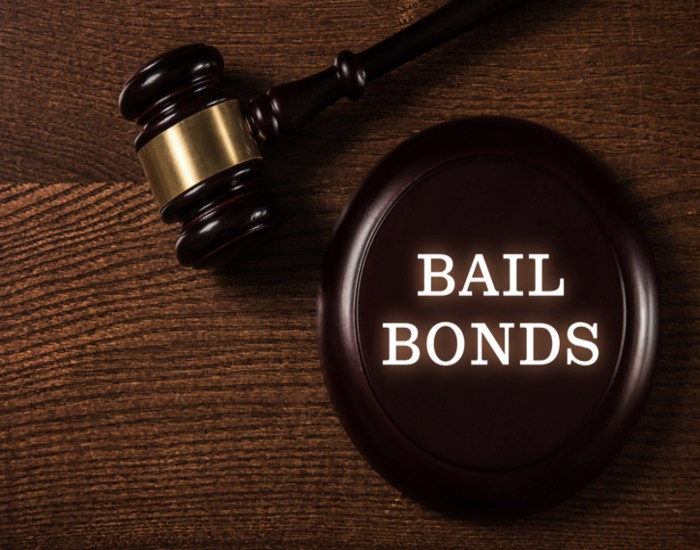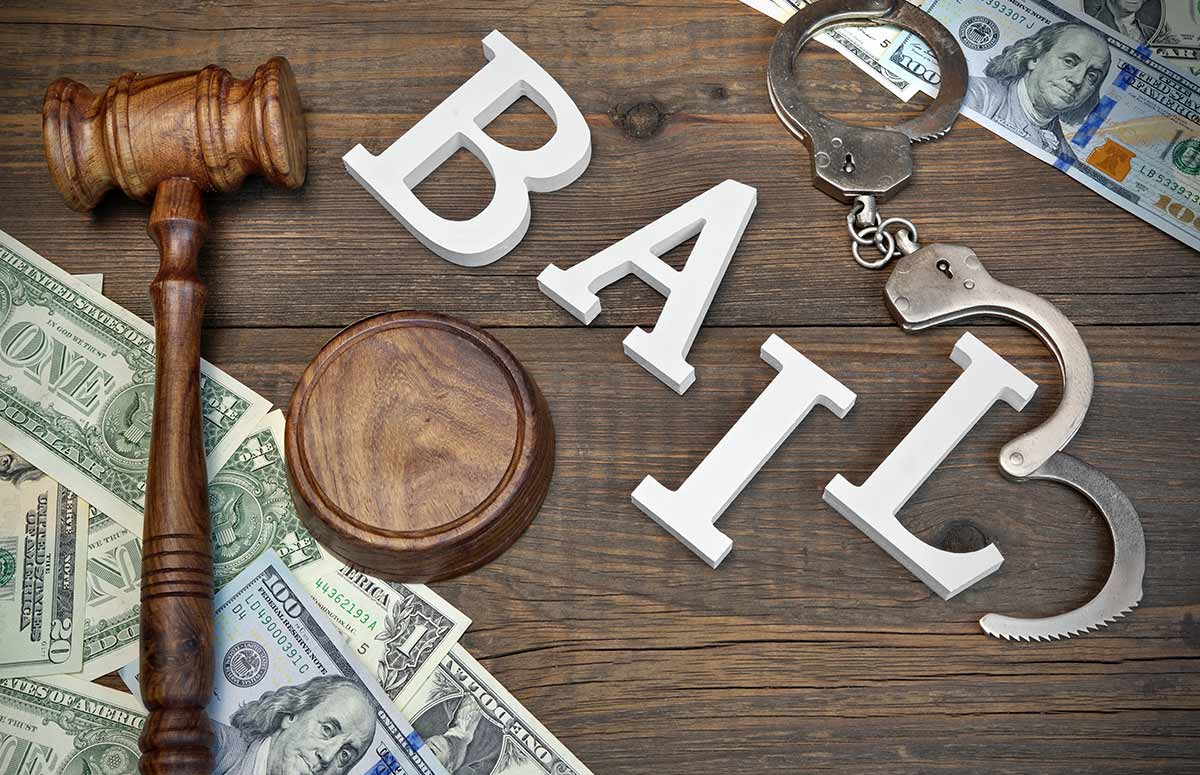Typical Misunderstandings About Making Use Of a Los Angeles Bail Bondsman
Typical Misunderstandings About Making Use Of a Los Angeles Bail Bondsman
Blog Article
How Bail Bonds Work: A Comprehensive Overview
Bail bonds play an essential function in the legal process by offering a mechanism for individuals to secure their release from safekeeping while waiting for test. Recognizing the details of how bail bonds operate, consisting of the functions of courts, bail bondsmensman, and the numerous costs entailed, can be essential for any individual navigating this intricate system. As we explore the different kinds of bail bonds and the elements that influence their costs, it comes to be apparent that the responsibilities linked to these contracts prolong far past simple economic purchases. What ramifications do these obligations hold for defendants and their households?
What Are Bail Bonds?
Bail bonds are commonly used in the criminal justice system as an economic guarantee that a charged person will appear in court as needed. When an individual is jailed, a court may set a bond quantity based on numerous variables, including the severity of the crime, the accused's criminal history, and the threat of flight. If the implicated can not afford the bail amount, they might look for the assistance of a bondsman.
A bail bond is an agreement between the defendant, the bondsman, and the court, making sure that the accused will fulfill their legal obligations. For a charge, generally a percentage of the complete bail amount, the bail bondsman provides the court with a guaranty that guarantees the bail. If the charged fails to show up in court, the bail bondsman is accountable for paying the full bail total up to the court, which might lead them to pursue the defendant for recovery.
Bail bonds serve to facilitate the launch of individuals waiting for trial, allowing them to keep their work and family duties while making certain conformity with court looks. This system is essential to stabilizing the rights of the accused with the interests of public security and judicial stability.
The Bail Process Explained
After understanding the role of bail bonds in the criminal justice system, it is essential to outline the bail procedure itself. The bail process starts when a person is apprehended and collared. Adhering to the apprehension, the accused is commonly brought prior to a court for a preliminary hearing, where the court will figure out whether to approve bail and set the amount.
If bail is approved, the accused has numerous choices to secure their release. They might pay the full bail quantity in cash, which is returned upon the conclusion of their court obligations. The accused can seek the aid of a bond bondsman, who bills a non-refundable fee-- usually a percent of the complete bail amount-- to publish bail on their behalf.
As soon as bail is posted, the defendant is released from wardship with the understanding that they need to go to all scheduled court appearances. Stopping working to appear can result in the forfeit of the bail and added legal repercussions. The process concludes when the instance is dealt with, whereupon the bail is either returned or retained by the bail bondsman as repayment for their solutions.

Kinds Of Bail Bonds
Numerous alternatives exist when it concerns protecting a release from custody with bail bonds. Recognizing the various types can aid defendants and their households make educated choices.
One of the most usual type is the guaranty bond, which involves a third-party bail bondsmansman that ensures the complete bail quantity to the court in exchange for a non-refundable fee, generally around 10% of the bail quantity. This alternative is commonly used because of its access for people that might not have the monetary ways to pay the full bail upfront.
An additional kind is the cash money bond, where the defendant or a co-signer pays the total bail amount in money straight to the court. Upon effective completion of the situation, the funds are reimbursed, minus any suitable charges.

Last but not least, immigration bonds are especially designed for individuals apprehended by migration authorities, promoting their launch while they await legal procedures. Each type of bail bond offers distinctive purposes, accommodating various situations and needs within the lawful system.
Elements Influencing Bail Prices
A number of key variables influence the overall price of bail, establishing exactly how a lot an offender or their household might require to learn the facts here now pay for release. Among the primary factors is the extent of the fees. Felony charges commonly cause greater bail quantities compared to misdemeanors as a result of the regarded risk of trip and the possible repercussions of the violation.

Courts may consider a defendant's revenue and properties when identifying bail, possibly leading to greater expenses for those with greater financial resources. If a bond bondsman regards a greater danger, they may establish a higher premium, more raising the expenses linked with protecting a bail bond.
Obligations of the Indemnitor
When bail has been protected, the obligations of the indemnitor, or the individual who consents to back the bail bond, entered play. The indemnitor is primarily liable for making certain that the offender attends all scheduled court appearances. Failure to do so might cause the forfeit of the bail bond and prospective legal repercussions for the indemnitor.
Additionally, the indemnitor is obligated to settle the bail bond business the sum total of the bond if the offender stops working to show up in court. This includes any kind of fees or costs sustained by the bail agent in recovering the accused, which may better rise the economic problem on the indemnitor.
The indemnitor has to likewise keep open communication with both the bail and the defendant bondsman, supplying any kind of needed updates connected to the defendant's situation. It is crucial for the indemnitor to remain knowledgeable about the legal obligations and repercussions associated with the bail bond, as ignorance might result in unexpected obligations.
Verdict
In recap, bail bonds serve as a critical mechanism within the criminal justice system, assisting in the launch of defendants while guaranteeing their appearance in court. Recognizing the numerous kinds of bail bonds, the ins and outs of the bail procedure, and the variables influencing bail more information costs is necessary for browsing this facility landscape. Furthermore, understanding of the responsibilities borne by the indemnitor highlights the importance of educated decision-making when engaging with bail bond solutions.
Recognizing the intricacies of exactly how bail bonds operate, including the roles of courts, bail bondsmen, and the various costs involved, can be crucial for anybody navigating this complicated system.After understanding the role of bail bonds in the criminal justice system, it is essential to describe the bail procedure itself. The offender can look for the assistance of a bail bondsman, who bills a non-refundable charge-- typically a portion of the total bail amount-- to post bail on their part.
If a bond Home Page bondsman regards a greater risk, they might set a higher premium, additional boosting the prices linked with safeguarding a bail bond. Recognizing the different types of bail bonds, the details of the bail process, and the elements affecting bail prices is necessary for navigating this facility landscape.
Report this page